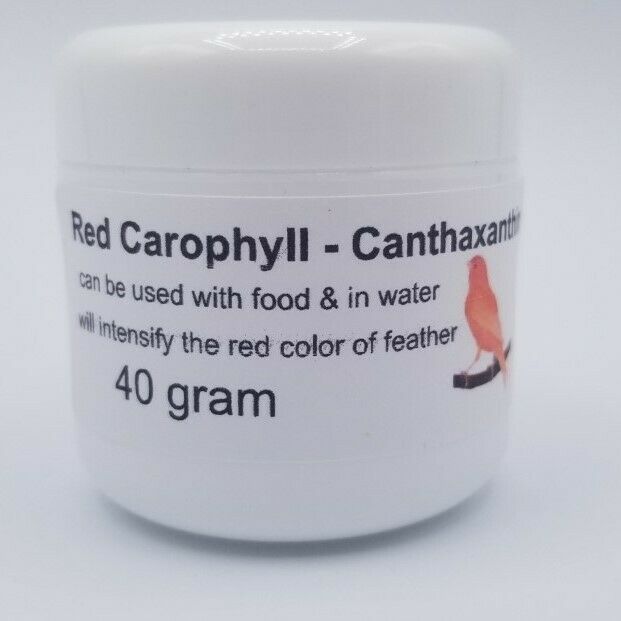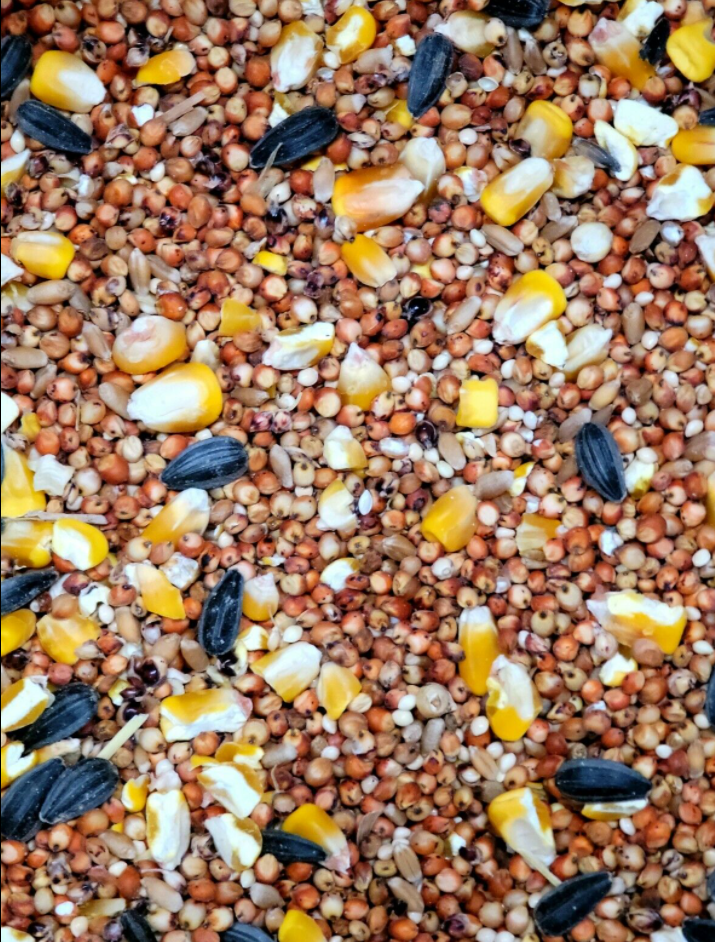-40%
CAROPHYLL - CANTHAXANTHIN 10% RED WHOLESALE FOR CANARIES WILL INTENSIFY FEATHER
$ 10.55
- Description
- Size Guide
Description
# 1 product to color feed canariesCarophyll red Canthaxanthin 10% for red factor and mosaic coloring formula 40 gram
Can be used to color feed any type of birds that carry the red gene , can be used on food / soft food or even in the water
this is the pure stuff , there is nothing added in it , made in u.k
Stability and storage
Carophyll Red , orange , yellow is sensitive to air, heat, light and changes in relative humidity. The product may be stored for 24 months in the unopened original container, once opened it is good for up to 12 months. keep it cool and dry, make sure does not get humid. dark cabinet is a good choice.
Safety
This product is safe for the intended use. Avoid ingestion, inhalation of dust or direct contact by applying suitable protective measures and practicing personal hygiene. Protective gloves, safety glasses (with side shields) and particle mask are recommended when handling the product. There may be a strong skin discoloration on contact.
• Prevention: Avoid release into the environment
• Disposal: Dispose of contents/container to an appropriate waste disposal plant
First aid measures
• Eye contact - Flush eyes with water as a precaution. Remove contact lenses.Protect unharmed eye. Keep eye wide open while flushing. If eye irritation persists, consult a specialist.
• Skin contact - Remove contaminated clothing immediately. Wash affected skin with soap and plenty of water - do not use any solvents. Report discoloration of the skin and itching to a physician (medical practitioner) and tell him/her that you have been in contact with carophyll. Take this sheet.
• If inhaled - Move to fresh air. If symptoms persist, consult a physician.
• If swallowed - Clean mouth with water and afterwards drink plenty of water.Do not give milk or alcoholic beverages. Never administer anything by mouth to an unconscious person. If symptoms persist, consult a physician.
Toxicological information
• Skin irritation: Prolonged skin contact may cause skin irritation
• Eye irritation: Contact with eyes can lead to mechanical irritation Sensitisation: This information is not available
• Carcinogenicity: No evidence of carcinogenicity known
• Genotoxicity in vitro: No evidence of mutagenicity known
• Reproductive toxicity: No evidence of adverse effects on fertility known
Allergy
some birds may have allergic reaction to carophyll , if you notice any reactions and change to the health of your bird
, immediately stop the product and contact an avian vet
Further information
The information provided in this publication is correct to the best of some champion breeders knowledge. this knowledge and information have been copyrighted by www.bestcanaries.com
Feeding instructions for administering carophyll to canaries
Feeding – economic method
The most economic method is only to supply carophyll during the period of molt,using approximately one third of a level teaspoon (0.5 gram) of carophyll for every 500 g of feed.
Feeding – throughout the year
Many canary breeders prefer to use very small quantities ofcarophyll throughout the year and claim that, by doing so, they are able to maintain the best possible intense red color in plumage. For this method, use approximately 1 level teaspoon of carophyll per every 2kg of feed.
The stability of carophyll when mixed into a dry feed is excellent, so that supplies for a few weeks at a time can be made up quite safely. When it is mixed with a moist, soft food, however, this must be prepared fresh each day.
Feeding – show quality canaries into soft food
Many show breeders recommend using 5-7 gram of red carophyll into 1 pound of soft food mix , when you see the droppings of the birds are red, that means you are using too much , lower the amount of carophyll into the soft food , you can add your desired vitamins and minerals on the soft food .
Feeding into drinking water
Some breeders use their caropyll in the birds drinking water , they recommend 1 gram per 250 ml of water , in order to dissolve the carophyll , warm up about 100 ml of water ,add the carophyll in, mix it well , make sure all the particles have been dissolved , and add the remaining 150 ml of room temperature water on top of it. the mixed water can be kept in the refrigerator for up to 5 days, change the birds water daily
. Do not add any vitamin or mineral in water when you use this method
.
Effects of carophyll in birds
Whilst excess supplies of carophyll can, to an extent, be stored in the liver of birds it is essential to follow the feeding methods contained in this document. Thus, any interruption in the addition of carophyll is not likely to affect the plumage color adversely unless, of course, it is just before or during molting when carophyll should always be supplied. It is important to note that the droppings of birds receiving carophyll may also become red in color. This is quite normal and unlikely to have adverse effects as long as the feeding methods and quantities described above are being followed. If too much carophyll is supplied, a bird’s plumage may tend to become dull and the bird shead may take on a purplish tinge until the over dosage has been corrected.
Further information
The information provided in this publication is correct to the best of some champion breeders knowledge . this knowledge and information have been copyrighted by www.bestcanaries.com










